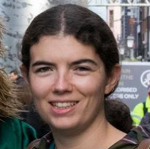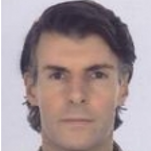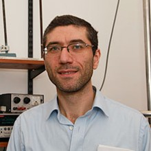Electromagnetic metamaterials
Our research
Optical metamaterials
Controlling the interaction between light and matter is fundamental to science and technology – from probing entanglement in quantum physics to harnessing the spectacular information carrying capacity of optical fibres. Nanoscale fabrication techniques, such as electron-beam lithography, allow us to create new materials with increasing sophistication and freedom of design, however controlling light at the nanoscale remains a challenge.
Our research
Our work in optical metamaterials spans from investigations of fundamental light-matter interactions to applications-driven research for sectors such as green energy generation and medical imaging.
We investigate a variety of topics such as:
- the tunable optical responses of active / reconfigurable optical metasurfaces (ordered and disordered),
- the development of new imaging techniques using the precise shaping of light ('structured light') to control how light propagates inside opaque scattering materials,
- the control of light below the wavelength limit using localised resonances on metallic nanostructures ('plasmonics'),
- the generation of new photonic modes by overlapping the optical response of two materials ('strong coupling'),
- bio-photonic inspired nanostructures.
Terahertz photonics
To date, most of the research into surface plasmon resonances has been limited to frequencies near metallic plasma frequencies (i.e. in the visible spectral region). Semiconductors, such as graphene, with plasma frequencies in the THz and IR spectral ranges, offer the potential for confining surface plasmon resonances at lower frequencies. Furthermore, semiconductors offer a unique and hugely beneficial advantage over metals: since the surface charge density can be modified by, for example chemical doping, plasma frequencies and SPP properties can be tailored. An extension of this is the exciting possibility of all-optical plasmon control, i.e. ‘photo-doping’ a semiconductor with visible frequency light, so that plasma frequencies may be tuned by a visible frequency light source, allowing active materials that can be switched on very fast (picosecond) timescales, something that is essential for high-bandwidth and/or time resolved applications.
Microwave and RF metamaterials
Our research focusses on developing and studying structured materials (metamaterials) that exhibit novel and valuable electromagnetic behaviours. These behaviours arise uniquely from their structure, and through controlling their geometry at a subwavelength scale, we can produce metamaterials with properties far beyond those found in traditional materials. Our research is focusses both on addressing the fundamental research challenges associated with designing, fabricating and testing these materials, to working with industrial partners to utilise metamaterials to tackle real world problems.
Our research
Some of the areas we work in are:
- Novel materials and design approaches for antennas.
- Control over surface impedance for manipulating reflection from flat and curved surfaces.
- Surface wave transport.
- Superscattering and retroreflective materials.
- Shape-morphing and for reconfigurable, or environmentally responsive electromagnetic materials.
Real-world applications
The importance of the microwave and RF region of the electromagnetic spectrum for applications ranging from telecommunications to wireless power transfer has nurtured a huge demand for materials to build smaller, lighter, more versatile components. Metamaterials have the potential to achieve these goals, and we use our expertise, alongside that of partners across academia, industry and government agencies, to apply our research to real world problems ranging across sectors as diverse as:
- Aerospace
- Healthcare
- Defence and security
- Telecommunications
Research expertise
Numerical and analytical modelling
- We are advanced users of Ansoft HFSS, CST Microwave studio and Comsol Multiphysics for numerical modelling of electromagnetic and acoustic systems. Differential methods for predicting the response of multilayered corrugated surfaces (diffraction gratings) have been developed, together with modal matching analytical techniques for predicting the response of well-defined photonic structures.
- We can predict the properties of magnetic nano-structures and devices using the MuMax simulation software, and permits the study of dynamical phenomena, such as spin waves in magnetic nanostructures (magnonics) and the kinetics of magnons.
- Our team have expertise in the development of finite difference time domain (FDTD) methods for predicting the MHz and GHz response of metamaterials, including the incorporation of the Landau-Lifshitz-Gilbert equation for the study of magnetic materials. This work is a University spin-out company, www.MaxLLG.com.
Rapid Prototyping
- We have an Ultimaker S5 3D-printer in our labs, which we use for every-day manufacture of cm- and mm- sized photonic and phononic crystals and metamaterial designs for microwave and acoustic experimentation. It has a build volume of 330 x 240 x 300mm with layer resolution < 100 microns.
- We also have use of further college facilities in Exeter Technologies Group.
Microwave Lab
- Capability from 70kHz – 110 GHz using multiple Vector Network Analysers (VNAs).
- Horn antennas that can be utilised from 800-1000 MHz and 5 to 110 GHz.
- Microwave benches with rotating stages that provide a collimated (distance source) beam to determine the response of test samples as a function of angle of incidence.
- A fully-lined anechoic chamber for antenna and/or scattering measurements.
- A computer controlled xyz-scanning stage and near-field probes provides the ability to measure the intensity and phase of the electromagnetic fields scattered from objects under test, and across surfaces.
- We also have a 65 GSa/s Arbitrary Waveform Generator coupled to a 4 channel oscilloscope with 25 GHz of real-time bandwidth.
Laser Facilities
For optical measurements, we have a vast array of laser systems from manufacturers such as Coherent, Carl Zeiss, Thorlabs and Spectra-Physics. Our range of continuous (CW) and pulsed lasers grant us access to a huge parameter space (controlling average power, peak power, wavelength and pulse duration) that enable us to perform novel experiments.
Our researchers in this area include:

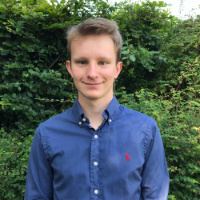

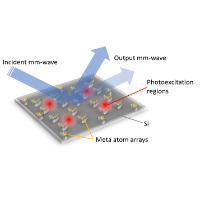

.webp)














